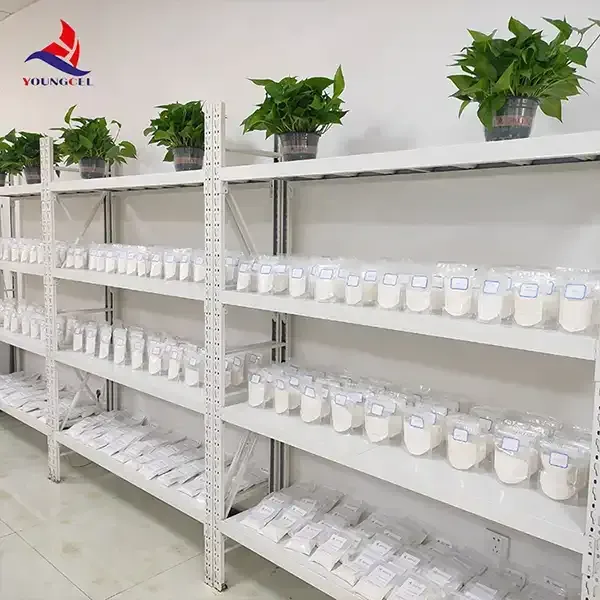Hydroxypropyl Methylcellulose (HPMC) An Overview
Hydroxypropyl methylcellulose (HPMC) is a widely used non-ionic cellulose ether that has garnered significant attention for its versatile applications in various industries, including pharmaceuticals, food, cosmetics, and construction. As a derivative of cellulose, HPMC is synthesized through the reaction of methylation and hydroxypropylation of cellulose, resulting in a compound that possesses unique properties such as solubility, thickening, emulsifying, and film-forming characteristics.
Hydroxypropyl Methylcellulose (HPMC) An Overview
In the pharmaceutical sector, HPMC is recognized for its role as a crucial excipient in drug formulations. Its gel-forming properties contribute to controlled release mechanisms in tablets and capsules, providing a steady release of the active pharmaceutical ingredient over time. This characteristic is especially valuable in developing sustained-release medications, improving patient compliance and therapeutic efficacy. Moreover, HPMC is often used in ophthalmic solutions due to its biocompatibility and ability to retain moisture, offering relief from dry eyes.
chemic hpmc hydroxypropyl methyl cellulos hpmc

The cosmetic industry also benefits from HPMC's multifunctional properties. It serves as a thickening agent and stabilizer in creams, lotions, and gels, enhancing the product's viscosity and texture. HPMC's film-forming ability allows for improved adhesion and moisture retention on the skin, making it a popular ingredient in skincare formulations. Additionally, its non-toxic and biodegradable nature aligns well with the increasing consumer demand for environmentally friendly cosmetic products.
Another crucial application of HPMC lies within the construction industry, where it is employed as an additive in cement and drywall compounds. In cementitious materials, HPMC helps improve water retention, ensuring optimal consistency and workability. It enhances the adhesion properties of mortar and improves the overall durability of construction materials. This makes HPMC a valued component in the formulation of high-performance building products.
Despite HPMC's many advantages, there are considerations to keep in mind when utilizing this polymer. Depending on the degree of substitution and molecular weight, HPMC can exhibit different solubility and viscosity characteristics. Thus, selecting the appropriate grade of HPMC is essential for achieving desired results in specific applications. Additionally, regulatory guidelines must be adhered to, particularly in food and pharmaceutical applications, to ensure safety and compliance.
In conclusion, hydroxypropyl methylcellulose is a remarkable compound with a wide range of applications across multiple industries. Its unique properties, including solubility, thickening, emulsifying, and film-forming abilities, render it an essential ingredient in pharmaceuticals, food products, cosmetics, and construction materials. As research and technology continue to advance, HPMC is poised to expand its role in innovative formulations, addressing the evolving needs of consumers and industries alike. Whether enhancing the sensory experience of food, ensuring the effectiveness of medications, improving the quality of cosmetics, or advancing construction materials, HPMC undoubtedly plays a pivotal role in modern formulations and applications.
-
Premium Detergent Grade HPMC Hydroxypropyl Methylcellulose ThickenerNewsSep.01,2025
-
Premium Detergent Grade HPMC Hydroxypropyl Methylcellulose: Superior Thickening & StabilityNewsAug.31,2025
-
HEC 100000 Hydroxyethylcellulose for Paint | Superior ThickeningNewsAug.30,2025
-
Wall Putty Rdp Powder Packaging DesignNewsAug.29,2025
-
Introduction to Hpmc Hydroxypropyl Methyl CellulosNewsAug.29,2025
-
Hpmc Industri Grade IntegrationNewsAug.29,2025




